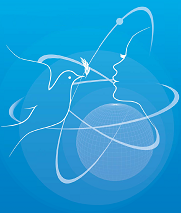Speaker
Amanda Townsend
(Colorado State University)
Description
The 2011 accident at the Fukushima-Daiichi nuclear reactor in Japan caused large areas to be contaminated with reactor fission products––the most dominant of these being cesium-137. Widespread contamination of cesium-137, and other radionuclides, gave rise to concerns about radiological protection of local residents and the environment. Cesium fate and transport in headwaters of forested ecosystems, which comprise over 70% of the contaminated region, is one of the key factors for long-term risk assessment in downstream agricultural and residential areas. This presentation describes the results of a dynamic compartment model developed to predict the fate and transport of cesium in Tokyo University of Agriculture and Technology’s research forest. The compartment model has been benchmarked on field data from the same research forest, collected over a 2-year period from 2012 to 2014. We have evaluated the transfer of cesium through this environment, including identifying where the majority of cesium is deposited and how concentrations vary over time. Future work includes evaluating the models fit and making adjustments to include any further changes to the environment, such as additional depositions, clean up efforts, or the inclusion (or exclusion) of a species.
| Country or International Organization | United States of America |
|---|
Primary author
Amanda Townsend
(Colorado State University)
Co-authors
Elizabeth Ruedig
(Colorado State University)
Masaru Sakai
(Tokyo University of Agriculture and Technology)
Dr
Takashi Gomi
(Tokyo University of Agriculture and Technology)
Dr
Thomas Johnson
(Colorado State University)

